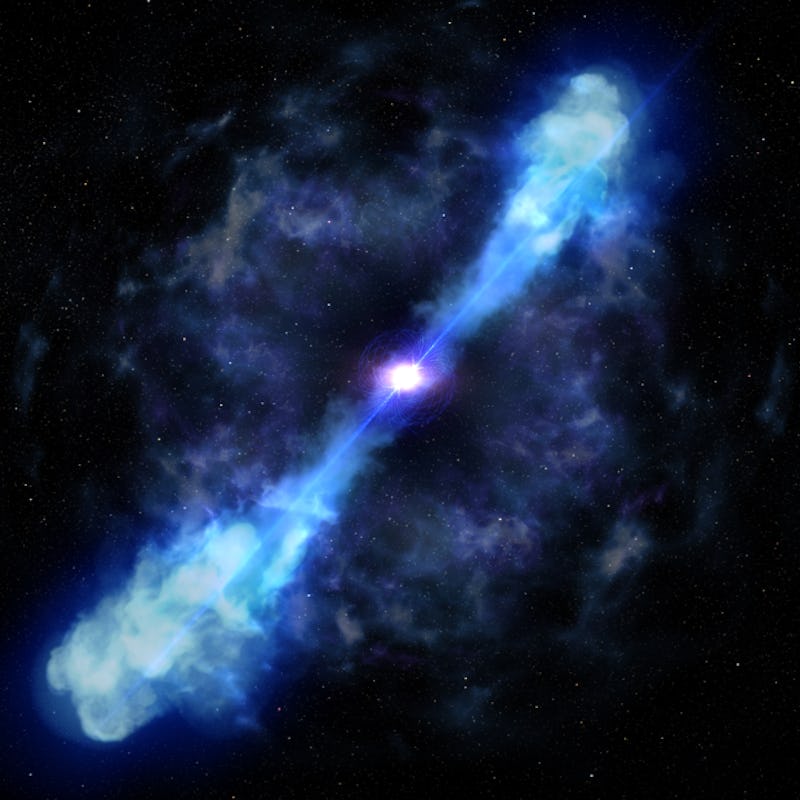A magnetar is born
Scientists captured the birth of a magnetar for the first time
This is the result of a giant collision between two neutron stars.
Updated:
Originally Published:

NASA, ESA and M. Kornmesser
On May 22, the Hubble Space Telescope detected a gamma ray burst that produced more energy in a half-second than the Sun will produce over its entire 10-billion-year lifetime.
NASA, ESA, and D. Player (STScI)
This particular short gamma-ray burst came from two neutron stars merging, resulting in the birth of a magnetar. The findings were detailed in a study published in The Astrophysical Journal.
Read more space science stories here.